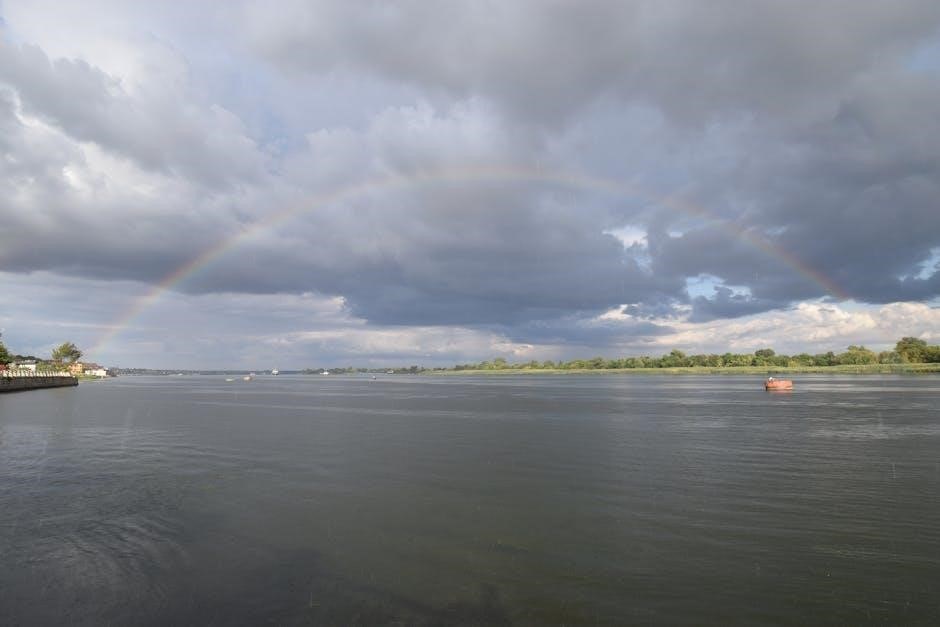
Overview of Bois d’Arc Lake
Bois d’Arc Lake, located in Fannin County, Texas, is a 16,000-acre reservoir built to address water supply needs in North Texas. Completed in 2022, it is the first major reservoir constructed in Texas in nearly 30 years, offering recreational opportunities while ensuring water security for growing populations.
Historical Background and Construction
Bois d’Arc Lake, located in Fannin County, Texas, is a significant water supply project developed by the North Texas Municipal Water District. Construction began in 2008 and was completed in 2022, marking the first major reservoir built in Texas in nearly 30 years. The lake was created to address growing water demands and enhance drought resilience in the region. Its construction involved the building of a 2-mile-long, 90-foot-tall dam and the excavation of a 16,000-acre reservoir. This project not only provides a reliable water source but also supports recreational activities, making it a vital resource for both residents and wildlife in North Texas.
Key Features and Specifications
Bois d’Arc Lake spans approximately 26 square miles, with a maximum depth of 70 feet, and can store up to 120 billion gallons of water. The reservoir is supported by a 2-mile-long, 90-foot-tall dam. Designed for water supply and drought mitigation, the lake also offers recreational opportunities. Its shoreline features multiple boat ramps, picnic areas, and fishing hotspots. The lake’s depth contours and habitat structures are mapped for navigation and fishing, making it a popular destination for outdoor enthusiasts. As Texas’ first major reservoir since 1990, Bois d’Arc Lake is a vital resource for both water security and recreation in North Texas.
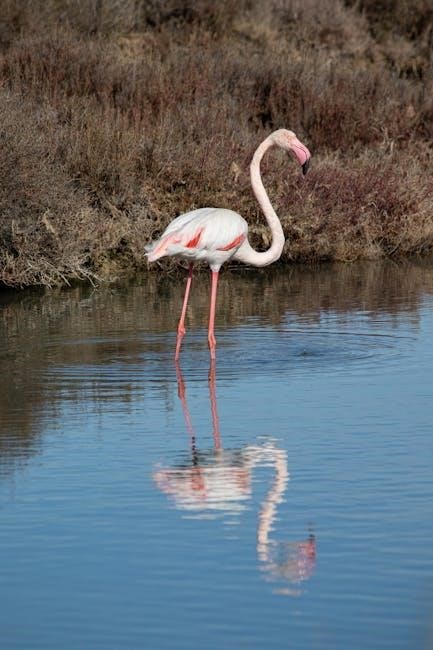
Recreational Activities at Bois d’Arc Lake

Bois d’Arc Lake offers diverse recreational opportunities, including fishing, boating, swimming, and birdwatching. Its boat ramps and picnic areas attract outdoor enthusiasts, enhancing its appeal as a regional destination.

Fishing Opportunities and Hotspots
Bois d’Arc Lake offers exceptional fishing opportunities, with a diverse range of species including largemouth bass, crappie, and catfish. The lake’s depth contours and structure provide ideal habitats for fish, making it a hotspot for anglers. Key fishing areas include the dam, creek channels, and submerged vegetation zones. Anglers can utilize the lake’s HD depth maps and interactive fishing charts to locate prime spots. The Texas Parks and Wildlife Department has also installed artificial fish habitats, enhancing biodiversity. Seasonal variations influence fish activity, with spring and fall being peak times for biting. A fishing map PDF is available for download, highlighting productive areas and ensuring a successful fishing experience for both novice and experienced anglers.
Boating and Access Points
Bois d’Arc Lake provides excellent boating opportunities with multiple access points, including three boat ramps equipped with parking lots. These ramps offer easy access to the lake’s 16,000-acre surface, allowing anglers and recreational boaters to explore its diverse waters. The lake’s map, available in PDF format, highlights these access points and navigational routes, ensuring a seamless experience for visitors. Additionally, the interactive map provides real-time updates on water levels and potential hazards, aiding in safe navigation. Boaters can enjoy a variety of activities, from fishing to leisurely cruises, while adhering to local regulations to preserve the lake’s ecosystem. The well-maintained access points make Bois d’Arc Lake a prime destination for water enthusiasts in North Texas.

Environmental Impact and Management
Bois d’Arc Lake serves as a vital water supply reservoir, supporting North Texas communities while preserving local ecosystems. Its construction included measures to mitigate environmental impacts, ensuring sustainable resource management and biodiversity conservation through regulated practices and monitoring.

Role in Water Supply and Drought Mitigation
Bois d’Arc Lake plays a crucial role in addressing North Texas’ water demands, serving as a reliable source for municipal and agricultural needs. With a capacity to store 120 billion gallons of water, it provides resilience against droughts, ensuring consistent supply even during dry periods. The reservoir supports over a million residents and irrigates crops, making it a cornerstone of regional water security. Its construction reflects proactive planning to meet growing population demands and climate challenges, ensuring long-term sustainability and preparedness for future drought events. This strategic resource balances human needs with environmental stewardship, highlighting its importance in Texas’ water management strategy.
Habitat Structure and Ecosystems
Bois d’Arc Lake supports a diverse ecosystem with structured habitats designed to promote aquatic life. The lake features artificial fish habitats, including submerged structures, which attract species like largemouth bass and crappie. These habitats are mapped in detail, allowing anglers to locate prime fishing spots. Vegetation and shoreline features also provide refuge for fish and wildlife, enhancing biodiversity. The lake’s depth contours and water quality support a variety of aquatic organisms, making it a thriving environment for both recreational and ecological purposes. Its ecosystem plays a vital role in maintaining regional biodiversity while offering opportunities for scientific study and conservation efforts.
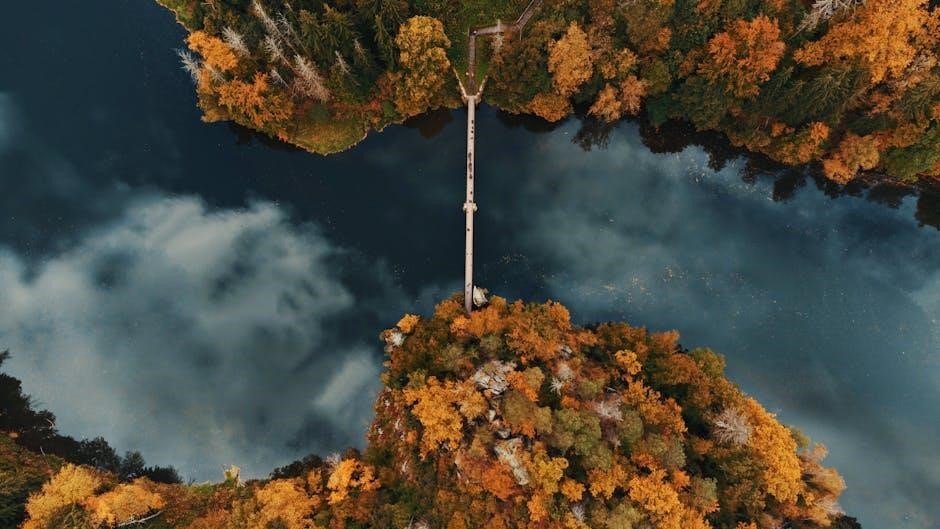
Obtaining the Bois d’Arc Lake Map
Bois d’Arc Lake maps can be downloaded as PDFs from the North Texas Municipal Water District, providing detailed depth contours, fishing hotspots, and essential navigational details.
Downloading the PDF Map
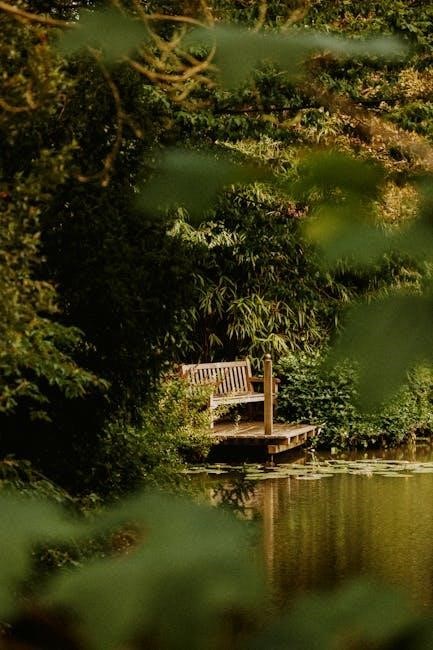
The Bois d’Arc Lake map in PDF format is readily available for download through the North Texas Municipal Water District’s official website. This map provides detailed information, including depth contours, fishing hotspots, and locations of boat ramps and recreational areas. Users can access the PDF by visiting the district’s website and navigating to the Bois d’Arc Lake section. The map is designed to be user-friendly, offering a comprehensive view of the lake’s layout and key features. With a high resolution and clear markings, it serves as an essential tool for anglers, boaters, and visitors planning their trips. The PDF format ensures compatibility across various devices, making it easy to print or share as needed.
Using Interactive Maps for Navigation
Interactive maps for Bois d’Arc Lake provide a dynamic and user-friendly way to navigate the reservoir. These maps, available online, feature real-time updates, depth contours, and marked points of interest such as boat ramps, fishing hotspots, and recreational areas. Anglers can utilize GPS coordinates to locate fish habitats, while boaters can identify safe navigation channels. The interactive format allows users to zoom in and out, explore specific regions, and access additional details about the lake’s ecosystem. Compatible with smartphones and tablets, these maps are ideal for planning trips and ensuring a seamless experience on the water. They also integrate with tools like the Habitat Structure Viewer, enhancing navigation and exploration capabilities.
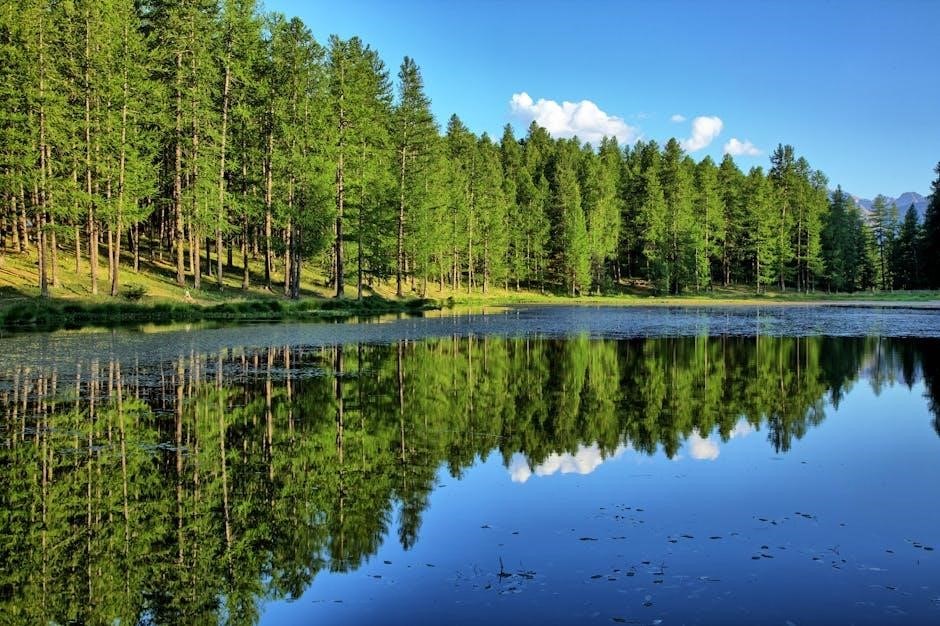
Benefits and Challenges
Bois d’Arc Lake offers water supply, economic growth, and recreational opportunities, but faces challenges like ecosystem disruption and the need for sustainable resource management and conservation.
Economic and Social Impact
Bois d’Arc Lake has significantly boosted the regional economy by supporting agriculture, industry, and recreational activities. It provides water for nearly a million residents and businesses, ensuring economic stability. The lake attracts tourists, fostering local businesses like fishing, boating, and hospitality. Recreational opportunities create jobs and stimulate growth in surrounding communities. However, its construction displaced some residents and altered landscapes, highlighting the need for balanced development. Overall, the lake is a vital resource, addressing water scarcity while driving economic and social progress in North Texas.
Environmental Considerations
Bois d’Arc Lake plays a crucial role in supporting local ecosystems and mitigating drought impacts in North Texas. The reservoir helps maintain water levels during dry periods, benefiting both wildlife and agriculture. However, its construction altered natural habitats, raising concerns about biodiversity. Measures such as fish habitat structures and waterfowl hunting areas aim to balance recreational use with environmental preservation. The lake’s management focuses on sustaining ecosystems while addressing water supply needs, ensuring a balance between human and environmental benefits.
Future Prospects for Bois d’Arc Lake
Bois d’Arc Lake, as Texas’s newest reservoir, holds significant potential for future development. Plans include expanding recreational facilities and enhancing environmental conservation efforts. The lake is expected to become a key destination for outdoor activities, fostering tourism and economic growth in Fannin County. Additionally, its role in water supply will continue to support North Texas communities, ensuring resilience against droughts. Ongoing management will focus on balancing ecosystem preservation with recreational use, while interactive maps will aid in navigation and resource planning. As the region grows, Bois d’Arc Lake is poised to remain a vital resource, blending sustainability with community engagement for long-term benefits.